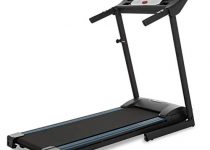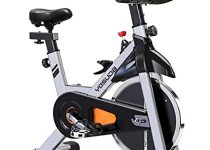Post Workout Muscle Recovery: Essential Healing Secrets
Post-workout muscle recovery allows your body to heal and strengthens muscle fibers. Understanding the ‘how’ and ‘why’ ensures more effective training sessions.
Muscle recovery post-exercise is essential to fitness progression. It involves repairing the microtears in muscle fibers resulting from intense physical activity. The process is crucial not only for muscle growth but also to prevent injuries, allowing individuals to train consistently.
An effective recovery strategy includes proper nutrition, hydration, rest, and activities like stretching or foam rolling that facilitate muscle repair. By prioritizing recovery, athletes can enhance performance, reduce soreness, and improve overall health. The ‘how’ centers on practical recovery methods, while the ‘why’ focuses on the biological need for muscles to rebuild and adapt to the stresses of exercise. Integrating these elements into a workout routine is vital for long-term fitness success and physical well-being.
Unlocking Post Workout Muscle Recovery
Your workout session just ended, and while you’re catching your breath, it’s time to focus on a critical component of your fitness regimen: post-workout muscle recovery. Without proper recovery, all those hard-earned gains can come to a halt, or worse, lead to injury. Let’s unlock the secrets of effective muscle recovery and explore why giving your muscles the care they need post-exercise is non-negotiable for any fitness enthusiast.
Importance of muscle recovery in fitnessImportance Of Muscle Recovery In Fitness
Muscle recovery isn’t just about feeling less sore. It’s about giving your body the time to repair and strengthen muscles that have been broken down during a workout. A good recovery means your muscles are rebuilding, which leads to:
- Improved performance: Recovered muscles are stronger and more capable of handling increased intensity or load.
- Reduced risk of injury: Allowing muscles to heal prevents overuse injuries that can arise from constant strain without rest.
- Better muscle growth: Recovery periods are when muscles grow, thanks to protein synthesis and repair processes.
- Enhanced endurance: Well-recovered muscles can sustain longer periods of physical activity.
- Optimal health: Comprehensive recovery supports overall health, including the immune and endocrine systems.
Overview Of What Happens To Muscles Post Workout
Diving into the biological effects post-exercise, we discover a fascinating world of muscle adaptation and repair. During a workout, muscles undergo tiny microtears due to the stress exerted on them. This is where the magic of recovery begins. An effective recovery phase encompasses:
- Initiation of inflammatory response to repair damage.
- The release of growth factors that help in the healing process.
- Nourishment of muscles through increased blood flow, which brings essential nutrients and oxygen.
- Triggering of protein synthesis for muscle repair and growth.
The consequent rest period is crucial because this is when the body utilizes available resources to rebuild and fortify the muscle fibers, making them stronger and more resilient than before. Surprisingly, this process is much more intricate than mere rest. It involves a harmonious blend of sleep, nutrition, hydration, and active recovery techniques.
Essential Healing Secrets Revealed
Embark on a transformative journey to optimal post-workout recovery where muscle healing is not a mystical art, but a science-backed process. Unlock the fundamental truths that propel you toward quicker, more effective recovery times and amplified gains. Consider this a blueprint to the often-ignored, yet pivotal phase of your fitness regimen.
Role of nutrition in muscle repairRole Of Nutrition In Muscle Repair
Nutrition is the cornerstone of muscle repair, acting as the building blocks for recovery. Proteins play a quintessential role, serving as the essential components for repairing muscle fibers. Carbohydrates also determine the pace of recovery by replenishing depleted glycogen stores.
Timing is crucial as well – consuming nutrients shortly after a workout can amplify the repair process:
- Protein Intake: Essential amino acids in proteins assist in rebuilding tissue.
- Carbs: Replenishing glycogen is vital for energy and facilitating protein absorption.
- Hydration: Fluids and electrolytes replenish what is lost through sweat and support metabolic processes.
The Impact Of Sleep On Recovery
Sleep is the unsung hero of recovery. During sleep, the body’s repair mechanisms go into overdrive:
- Hormone Production: The release of growth hormone during sleep fosters muscle growth and repair.
- Muscle Synthesis: Muscle-building is most potent during deep sleep stages.
- Energy Restoration: The body replenishes energy reserves for the next day’s activities.
Achieving 7-9 hours of quality sleep nightly can significantly enhance recovery, promote muscle synthesis, and reduce inflammation. Sleep quality is as crucial as quantity; ensuring a restful environment is key for uninterrupted, restorative slumber.
Optimal Nutrition For Speedy Recovery
After a rigorous workout, the focus often immediately shifts to muscle recovery, an essential but sometimes underrated component of fitness. Optimal nutrition plays a pivotal role in speeding up this process, ensuring that your body has the necessary resources to repair and strengthen muscle tissue. The right balance of macronutrients, along with specific supplements, can significantly enhance recovery times and promote overall muscle health. Let’s delve into the nutritious cornerstones that aid in swift muscle recuperation.
Macronutrients And Their Functions In Healing
Macronutrients are the foundation of any post-workout nutrition strategy. Understanding the role each one plays can help tailor your meals for maximum recovery.
| Macronutrient | Function in Healing |
|---|---|
| Proteins | These are the building blocks of muscle repair and growth, crucial post-exercise. They break down into amino acids, which address muscle damage and facilitate tissue repair. |
| Carbohydrates | Carbs replenish depleted glycogen stores, the primary energy source for muscles, minimizing fatigue and preparing the body for subsequent workouts. |
| Fats | Essential for hormonal balance and cell structure, fats also provide a longer-term energy source, aiding in the ongoing process of recovery. |
Supplements That Aid In Muscle Recovery
Strategic supplementation can serve as an effective complement to whole foods, targeting specific needs for expedited muscle repair.
- Branch-Chain Amino Acids (BCAAs): These specific amino acids — leucine, isoleucine, and valine — support protein synthesis and may reduce muscle soreness post-exercise.
- Creatine: Known for its ability to increase muscle mass and strength, creatine also helps in quickly resynthesizing ATP, the energy currency of the cell, for better recovery.
- Omega-3 Fatty Acids: These anti-inflammatory agents can help reduce muscle soreness and accelerate the healing process.
- Vitamin D and Calcium: Both are critical for bone health, an often-overlooked aspect of muscle recovery, as bones need to be strong to support muscle function.
- Antioxidants: Supplements like vitamins C and E help combat oxidative stress from intense workouts, aiding in the prevention of excessive inflammation and facilitating muscle repair.
A diet rich in macronutrients combined with judiciously chosen supplements sets the stage for rapid and effective muscle recovery, allowing you to return to your training regimen with full force. Tailor your post-workout nutrition plan to fit your specific needs, and watch as your muscles rejuvenate quicker and stronger with each session.
Hydration And Muscle Repair
When the last rep is complete and the sneakers hit the cooldown cycle, muscle recovery takes center stage. Integral to this crucial process is proper hydration. Your muscles are like engines that run hot and hard, and water is the cooling and lubricating element that keeps them in prime condition. Understanding the role of hydration and its partnership with nutrient-rich blood can make a notable difference in your muscle repair journey. Let’s dive into how strategic water intake is not just about quenching thirst, but also about advancing muscle health and recovery.
How Water Intake Influences Muscle Health
Optimal hydration is a key player in post-workout muscle recovery. Water’s role in the body goes far beyond simply satisfying thirst. Here’s how water intake directly benefits muscle health:
- Muscle hydration: Water helps to maintain the muscle’s volume and shape, as it contributes to the muscle cells’ ability to retain fluid.
- Transportation of nutrients: Athletes need water for efficient transportation of essential nutrients like proteins and carbs to the muscles which aids in growth and repair.
- Joint and tissue health: Adequate water intake ensures lubrication in the joints, reducing the risk of injury and inflammation post intense workouts.
- Temperature regulation: Through sweating, water dissipates heat generated by the muscles during exercise, preventing overheating and allowing for sustained performance.
Water’s influence on muscle health cannot be overstated. A dehydrated state can lead to decreased performance, increased fatigue, and a higher risk of cramps and muscle damage. This is why it’s crucial to stay hydrated before, during, and after workouts for optimum muscle function and recovery.
The Balance Between Electrolytes And Post-workout Recovery
Electrolytes play an indispensable role in post-workout recovery. These charged minerals—chief among them sodium, potassium, magnesium, and calcium—regulate muscle function, hydration levels, and the body’s pH balance. Here’s how a delicate electrolyte balance aids in recovery:
- Sodium and potassium: These electrolytes work in a delicate symphony to conduct nerve impulses in muscles, preventing cramps and facilitating muscle relaxation and contraction.
- Magnesium: Crucial for muscle recovery, magnesium assists in the repair of muscle fibers and reduction of soreness and inflammation.
- Calcium: Integral for muscle contractions, calcium helps muscles to relax and contracts appropriately post-exercise.
Replenishing electrolytes through a balanced diet and targeted supplementation, when necessary, is critical after strenuous activity. Combining adequate water intake with the right mix of electrolytes can drastically reduce recovery time and muscle soreness. By allowing these vital minerals to rebalance the body’s fluids, you’re ensuring optimal conditions for muscle repair and building a resilient foundation for your next workout.
Advanced Recovery Techniques
Post-workout muscle recovery is crucial for anyone aiming to improve performance, increase strength, and enhance muscle growth. The body needs time to heal and adapt to the stress of exercise. Advanced recovery techniques go beyond basic rest, embracing strategies that actively facilitate muscle repair and rejuvenation. Discover how to boost recovery and why letting your muscles heal is essential for your fitness journey.
Active Recovery And Its Benefits
Active recovery involves participating in low-intensity exercise after periods of heavy training. Unlike complete rest, this technique encourages movement and mild exertion, promoting blood circulation and nutrient delivery to tired muscles.
- Improved blood flow: Enhances the delivery of oxygen and nutrients needed for repair.
- Reduced lactic acid: Light activity helps clear lactic acid buildup, aiding in decreased muscle soreness.
- Enhanced flexibility: Maintains joint mobility and reduces stiffness.
Examples of active recovery may include activities such as walking, yoga, or a leisurely bike ride.
Massages And Muscle Relaxation Methods
Massages are not just a luxury; they’re a potent tool for muscle relaxation and recovery. By applying pressure to the muscle tissue, massages can:
| Benefits | Description |
|---|---|
| Stimulate blood flow | Increases circulation, speeding up recovery time. |
| Release tension | Helps prevent knots and areas of tightness in muscles. |
| Boost flexibility | Lengthens muscle fibers, promoting optimal motion range. |
Popular muscle relaxation methods that complement massages include:
- Foam rolling
- Myofascial release
- Stretching sequences
- Hot and cold therapy
Integrating these practices into your recovery routine will help ensure muscles rejuvenate effectively, paving the way for enhanced performance and reduced injury risk in subsequent workouts.

Credit: tenscare.co.uk
Smart Use Of Recovery Tools
Effective post-workout muscle recovery is not just about time; it’s about the tools you use to accelerate your healing process. By integrating the right recovery devices into your regimen, you can enhance muscle repair, reduce soreness, and decrease recovery times. Here, we delve into the world of recovery tools, comparing the popular foam rollers and massage guns, and assessing the role of compression garments in aiding muscle recuperation.
Foam Rollers Versus Massage Guns
Understanding the differences between foam rollers and massage guns can be pivotal in selecting the right tool for your recovery needs. Both devices aim to provide myofascial release, but they operate quite differently.
| Foam Rollers | Massage Guns |
|---|---|
|
|
While foam rollers serve as an excellent tool for overall muscle conditioning and can be particularly helpful in improving balance and flexibility, massage guns are more precise, offering deeper penetration into the muscle tissue. This makes them exceptionally effective at targeting specific pain points or knots.
The Effectiveness Of Compression Garments
Compression garments, including socks, sleeves, and tights, are designed to provide consistent pressure on the muscles. This pressure promotes circulation and reduces muscle oscillation, resulting in a potentially faster recovery. But how effective are they?
- Improved Blood Flow: By enhancing circulation, compression garments can facilitate the removal of lactic acid and other byproducts of exercise.
- Reduced Muscle Soreness: Wearing compression garments has been linked to lower levels of reported muscle soreness.
- Minimized Muscle Damage: The garments may reduce microtraumas to the muscle fibers during workouts.
Despite these benefits, the effectiveness of compression garments largely depends on the fit and quality of the material. Properly fitted garments ensure optimal pressure and recovery support. Whether it’s after a strenuous leg day or a long run, integrating these items into your recovery protocol might be just what you need for a quicker bounce back.
Tailoring Recovery To Your Needs
Understanding the unique requirements of post-workout recovery is crucial for optimizing muscle healing and growth. Each individual’s body responds differently to exercise, and recognizing the subtleties of personal recovery needs can dramatically enhance overall fitness results. Customizing your recovery strategies ensures that your body gets precisely what it needs to repair and strengthen after a rigorous workout session.
Individual Differences In Recovery Rates
Not every athlete recovers at the same pace. Factors such as genetics, age, training intensity, and nutritional habits play a significant role in how quickly and efficiently your muscles recover. For instance, younger athletes might experience faster recovery times due to an abundance of growth hormones, while older individuals might need a bit more time due to slower metabolic processes.
- Genetics: Influences the speed of muscle fiber repair and adaptation.
- Age: Younger individuals generally recover quicker than older adults.
- Training Intensity: Higher intensity requires longer recovery periods.
- Nutrition: Protein and carb intake post-exercise can expedite recovery.
To tailor recovery effectively, consider factors such as sleep quality, stress levels, and lifestyle habits. A personalized approach, which may include modifications in workout intensity, nutrition plans or rest days, can yield optimal recovery and performance.
How To Listen To Your Body’s Signals
Recognizing your body’s recovery signals is key to preventing injuries and ensuring continuous progress. Symptoms like excessive fatigue, persistent soreness, or decreased performance can indicate inadequate recovery. Your body often communicates through subtle cues that should not be ignored.
| Signal | Meaning | Action |
|---|---|---|
| Muscle Soreness | Normal if it subsides within 48 hours | Rest the affected muscles, apply ice or heat as needed |
| Exhaustion | Could be from overtraining or lack of sleep | Ensure adequate rest and proper nutrient intake |
| Declining Performance | Maybe a sign of overtraining or insufficient recovery | Adjust exercise routine, consider longer rest periods |
A responsive approach to recovery includes adjustments based on daily and weekly feedback from your body. Track your workouts, sleep patterns, and nutrition to identify trends and adapt as needed. Distinguishing between temporary discomfort and the onset of an overuse injury is crucial. Consulting with fitness professionals can also provide insights into effective recovery methods tailored to your needs.
Ultimately, a well-rounded recovery plan will be a balance of physical therapy exercises, adequate nutrition, and rest. Listen intently to your body, respect its signals, and adjust your recovery strategies accordingly for sustainable muscle health and improved performance.
Conclusion
Understanding the importance of muscle recovery post-workout is key for both performance and health. By allowing time for repair and growth, you help prevent injuries and maximize gains. Remember, muscle recovery isn’t just a suggestion—it’s a critical component of your fitness journey.
Embrace it, and your body will thank you.
Table of Contents


